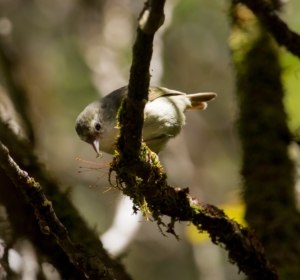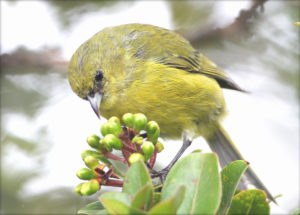According to a press release issued by the U.S. Department of the Interior (DOI), a significant amount of federal funding will be sent to Hawaiʻi to help address the extinction crisis facing at least four species of native Hawaiian birds, including Kauaʻi’s ʻakikiki and ʻakekeʻe.
An unprecedented $14 million for Hawai‘i ecosystem restoration is included in the Bipartisan Infrastructure Law. The DOI will administer the law’s funds for Ecosystem Restoration and Resilience which will be used to restore habitat connectivity for aquatic species around the country and advance habitat restoration, invasive species control, conservation of at-risk and listed species and benefits to several significant ecosystems.
Since several species of native Hawaiian forest birds are on the verge of extinction, this federal funding could not come at a better time and will add significantly to projects and efforts already underway.
The DOI funding announcement was made on Friday, just weeks after federal and state conservation officials revealed the results of a bio-cultural study which describes the near-future extinction plight facing four Hawaiian honeycreeper species (see information about this report here).
The Birds, Not Mosquitoes working group is already developing a program to introduce incompatible male mosquitoes into the habitats of ‘akikiki and ‘akeke‘e on Kaua‘i, and kiwikiu and ‘ākohekohe on Maui, to suppress the populations of wild mosquitoes and to engage with local communities on this issue.
The DLNR is receiving funding, through the U.S. Fish and Wildlife Service (USFWS), for the development of novel mosquito management using non-compatible mosquitoes on a landscape-scale basis and for the development of additional captive propagation facilities at the San Diego Zoo Wildlife Alliance’s Maui Bird Conservation Center.
Dr. Lainie Berry, Wildlife Program Manager for the DLNR Division of Forestry and Wildlife (DOFAW) noted, “This tremendous level of additional federal dollars will go a long way toward supplementing and increasing efforts already in place to save these species.”



 Robby Kohley
Robby Kohley